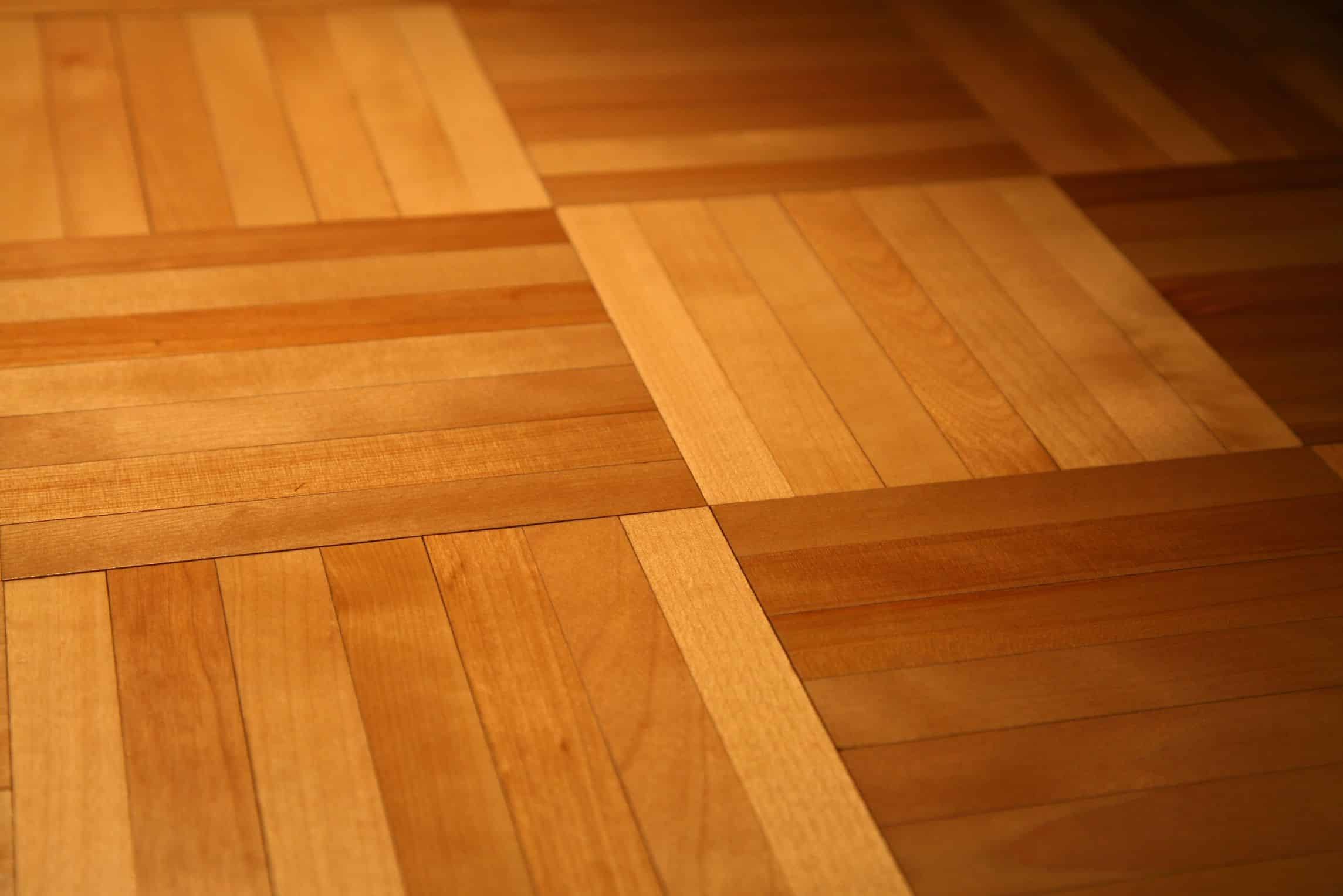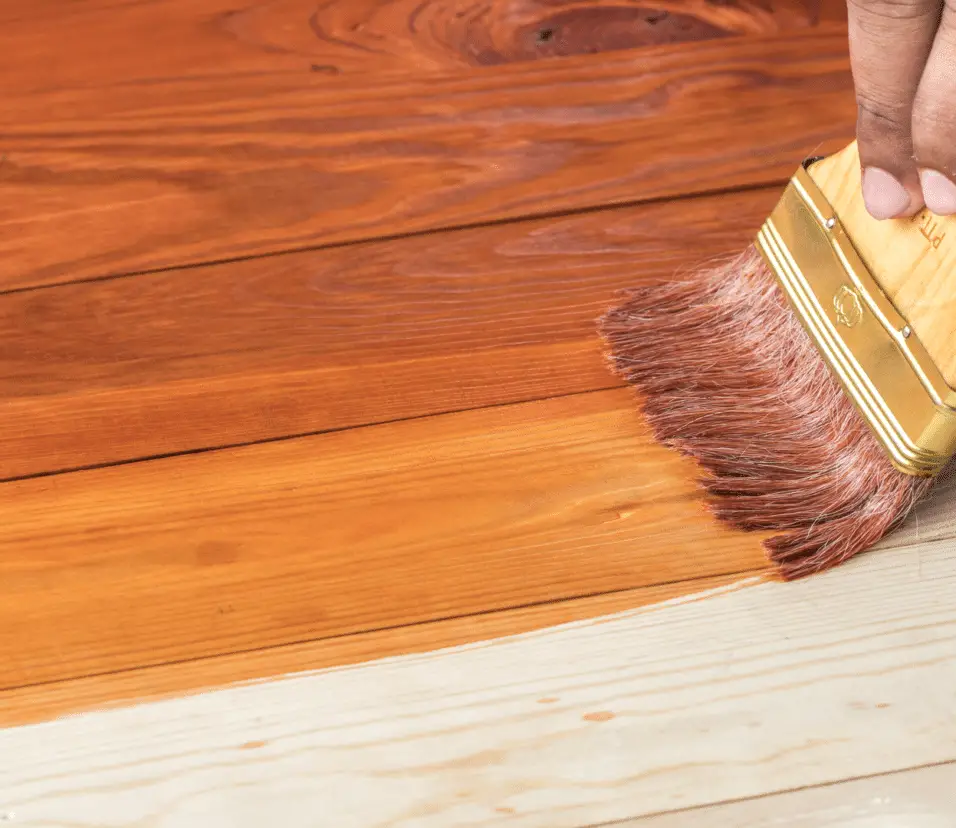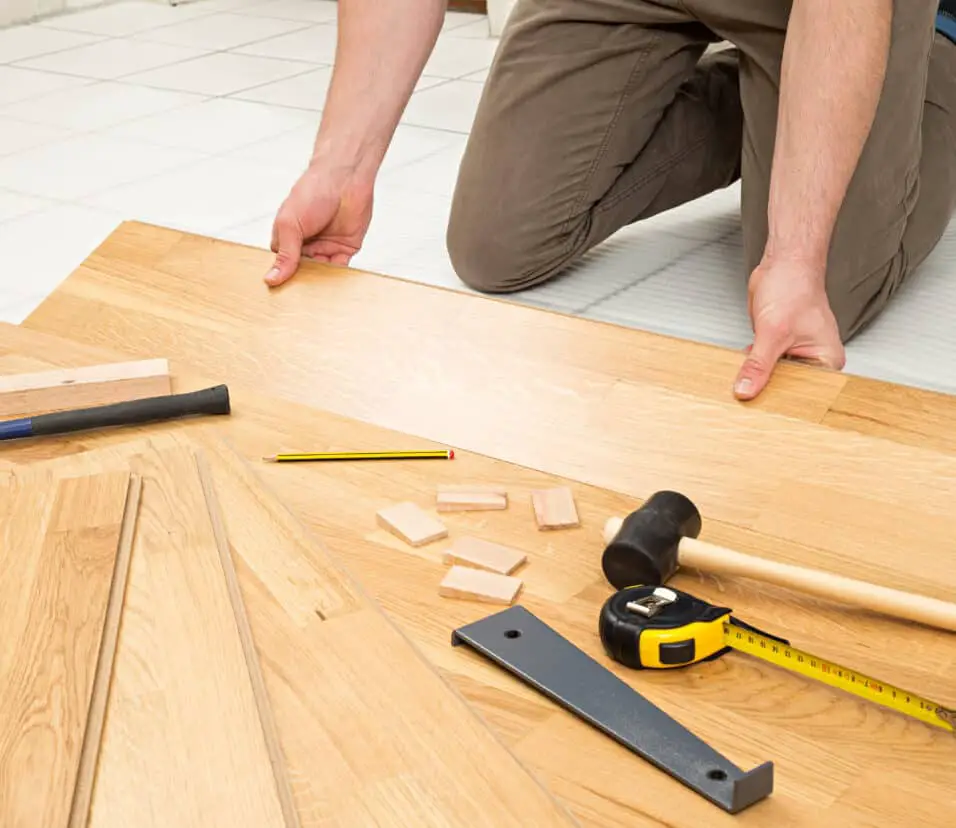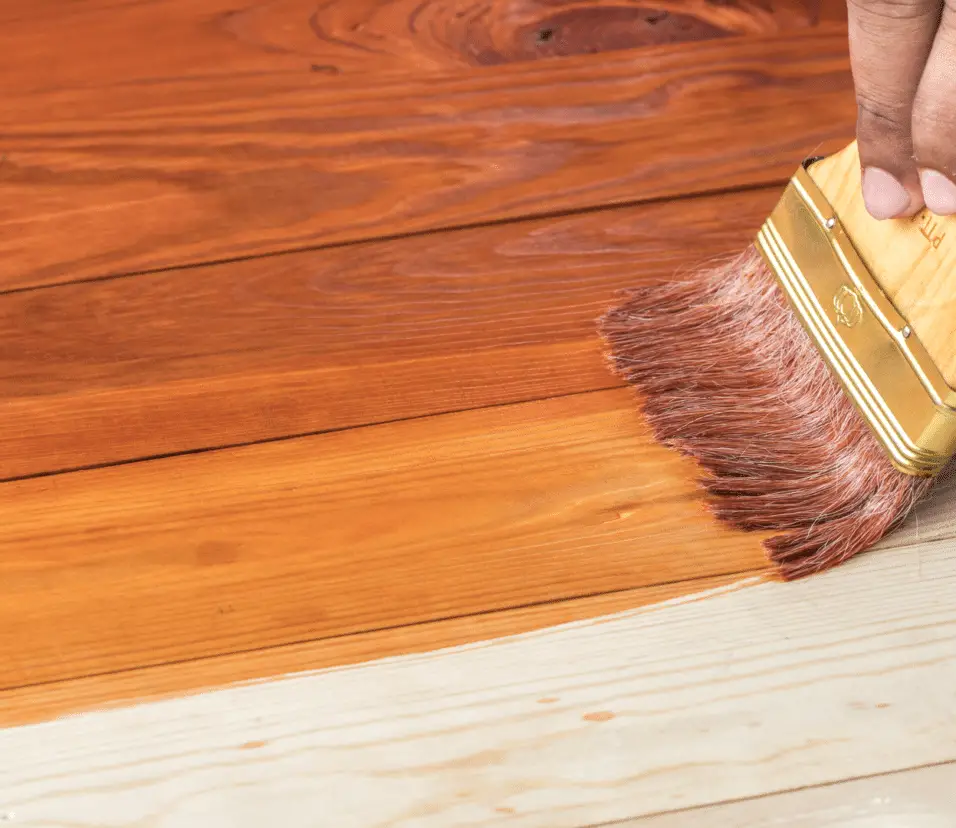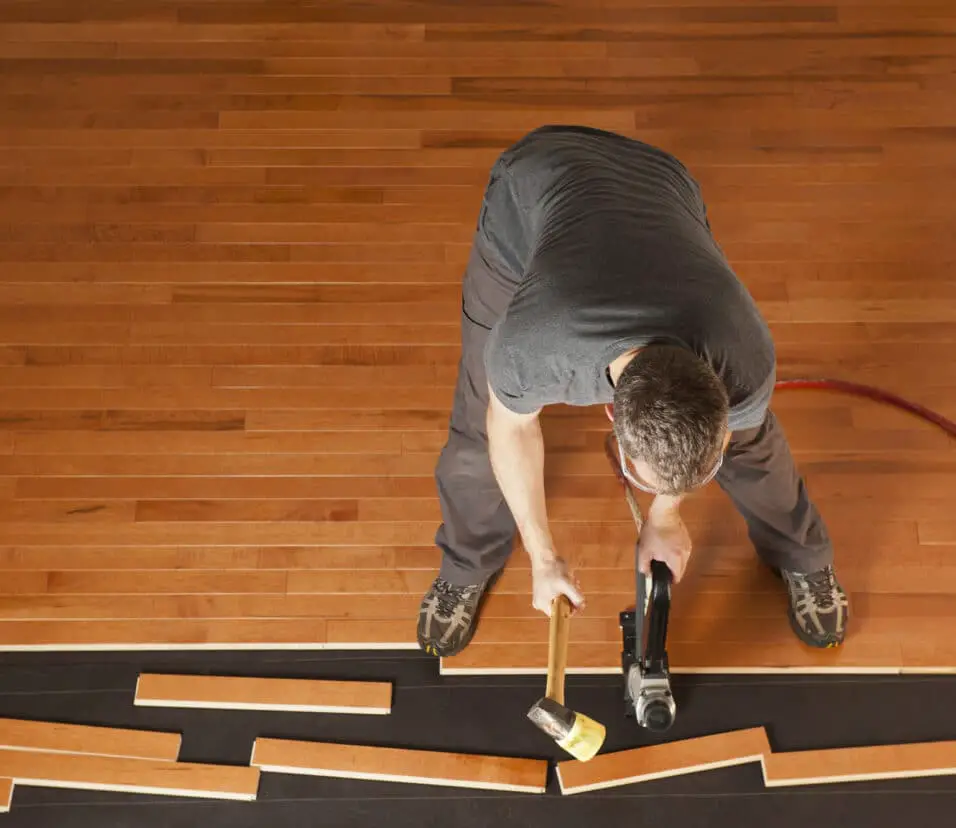How To Fix Water Damaged Swollen Wood Floor
Introduction
How To Fix Water Damaged Swollen Wood Floor: Water damage can wreak havoc on wood floors, causing them to swell, warp, and lose their structural integrity. Whether the water intrusion was due to a plumbing leak, flooding, or a spill that went unnoticed, addressing the issue promptly is crucial to prevent further damage and restore the floor’s original beauty. Fixing a water damaged swollen wood floor requires a combination of quick action, thorough assessment, and appropriate repair techniques. In this guide, we will explore the necessary steps to effectively address water damage and bring your wood floor back to its pre-damage condition.
The first and most crucial step in fixing a water damaged swollen wood floor is to identify the source of water and stop any ongoing leaks. If the water source remains unresolved, any repair efforts will be futile and further damage will continue. Once the water source is under control, it’s essential to assess the extent of the damage. Inspect the affected area thoroughly, checking for signs of swelling, warping, discoloration, and any signs of mold or mildew growth. The severity of the damage will dictate the appropriate course of action for restoration.
Before attempting any repairs, it is essential to ensure the affected area is completely dry. Use fans, dehumidifiers, and proper ventilation to expedite the drying process. Moisture meters can also be valuable tools to determine if the wood has reached an acceptable moisture level for repair. However, exercise patience, as rushing the drying process may lead to further damage or complications
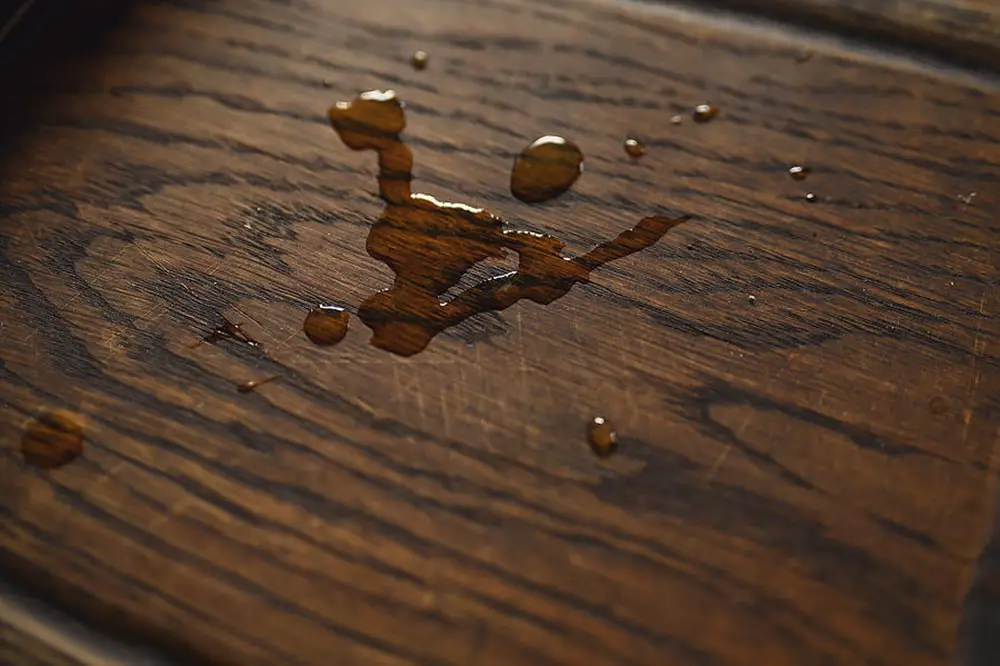
Can you fix swollen wood floors?
A buckled floor with only minor damage can sometimes be repaired simply by removing the excess moisture, but serious buckling will necessitate replacing the hardwood boards.
swollen wood floors can be fixed, but the success of the repair depends on the extent of the damage and the promptness of the response. When wood floors are exposed to water or excessive moisture, they can absorb the liquid, causing the wood to swell and warp. It is essential to address the issue as soon as possible to prevent further damage and increase the likelihood of successful repairs.
The first step in fixing swollen wood floors is to identify and eliminate the source of water or moisture. Whether it’s a leaking pipe, a roof leak, or a flood, stopping the water source is crucial to prevent ongoing damage. Once the water source is under control, the drying process must begin immediately. Using fans, dehumidifiers, and proper ventilation can help expedite the drying process. Patience is key, as rushing the drying can lead to more harm.
After the wood floor has dried completely, the extent of the damage can be assessed. Minor swelling and warping may improve over time as the wood acclimatizes to normal humidity levels. In such cases, simple interventions like improving ventilation and using dehumidifiers may be enough to rectify the problem.
For more severe swelling and warping, individual plank replacement might be necessary. Skilled professionals can carefully remove the swollen planks and replace them with new ones that match the existing flooring. This process requires precision and expertise to ensure a seamless integration of the new planks.
How do you get rid of swollen wood floors?
If the floor is swollen from humidity, then you must set up ventilation fans to dry out the room. To speed up the process, a dehumidifier may also be set up in the room to help dry out the flooring and capture the moisture.
Getting rid of swollen wood floors involves a systematic approach to address the underlying cause of the swelling and then implementing appropriate remedies to restore the wood to its original condition. Here’s a step-by-step guide on how to tackle swollen wood floors effectively:
Identify and Eliminate the Source of Moisture
The first and most crucial step is to find and resolve the source of water or excessive moisture that caused the wood floor to swell. This could be a leaking pipe, a roof leak, a spill that went unnoticed, or flooding from external sources. Stopping the moisture from coming in is vital to prevent further damage.
Dry the Affected Area
Once the water source is eliminated, the next step is to dry the swollen wood floor thoroughly. Use fans, dehumidifiers, and proper ventilation to expedite the drying process. Moisture meters can help monitor the moisture levels to ensure the wood is adequately dried before proceeding to the next steps.
Assess the Damage
After the wood floor has dried completely, assess the extent of the damage. Minor swelling may improve over time as the wood acclimatizes to normal humidity levels. However, significant swelling and warping may require more extensive interventions.
Address Minor Swelling
For minor swelling, you can try improving ventilation in the area and using dehumidifiers to help the wood regain its original shape gradually. Patience is key, as it may take some time for the wood to adjust.
Individual Plank Replacement
If the swelling is severe and has led to significant gaps between the planks, individual plank replacement might be necessary. Skilled professionals can carefully remove the swollen planks and replace them with new ones that match the existing flooring, ensuring a seamless integration.
Sanding and Refinishing
In cases where the swelling has caused the wood floor to become uneven, sanding and refinishing may be the best solution. Sanding helps level the surface, removing any uneven areas, and refinishing gives the floor a fresh, uniform appearance.
Preventative Measures
After the repair, consider taking preventative measures to protect your wood floor from future swelling. These measures may include using area rugs in high-moisture areas, ensuring proper ventilation, and maintaining stable indoor humidity levels.
How do you fix a swollen wood floor with water?
The Solution:
- The quick way: There are many companies that offer dehumidifier services that can dry out your floors very quickly.
- The slow way: Wood will eventually dry out on its own and become almost completely flat again.
- The alternative way: Another option is to tear-out the wood that is wet and replace it.
Fixing a swollen wood floor that has been affected by water requires a systematic approach to address both the underlying cause of the swelling and the damage to the wood. Here’s a step-by-step guide on how to effectively repair a water-damaged swollen wood floor:
Identify the Source of Water
The first step is to identify and eliminate the source of water or moisture that caused the wood floor to swell. This could be a leaking pipe, a roof leak, a spill that went unnoticed, or flooding from external sources. Stopping the water source is crucial to prevent further damage.
Remove Standing Water
If there is any standing water on the wood floor, it should be removed promptly to prevent further absorption into the wood. Use towels, mops, or a wet/dry vacuum to soak up the water as much as possible.
Dry the Affected Area
Thoroughly dry the swollen wood floor as quickly as possible. Use fans, dehumidifiers, and open windows to improve air circulation and expedite the drying process. Moisture meters can help monitor the moisture levels in the wood to ensure it is adequately dried.
Assess the Damage
Once the wood floor is dry, assess the extent of the swelling and any accompanying damage. Inspect for signs of warping, cupping, or buckling. Depending on the severity, you may need different repair strategies.
Address Minor Swelling
For minor swelling, improving ventilation and using dehumidifiers can help the wood gradually return to its original shape. Be patient, as it may take some time for the wood to adjust.
Individual Plank Replacement
If the swelling is severe and has led to significant gaps between the planks or if individual planks are visibly damaged, consider replacing the affected planks. Skilled professionals can carefully remove the swollen planks and replace them with new ones that match the existing flooring.
Sanding and Refinishing
In cases where the swelling has caused the wood floor to become uneven, sanding and refinishing may be necessary. Sanding helps level the surface, removing any uneven areas, and refinishing gives the floor a fresh, uniform appearance.
Apply Preventative Measures
After the repair, take preventive measures to protect your wood floor from future water damage. These may include using area rugs in high-moisture areas, ensuring proper ventilation, and maintaining stable indoor humidity levels.
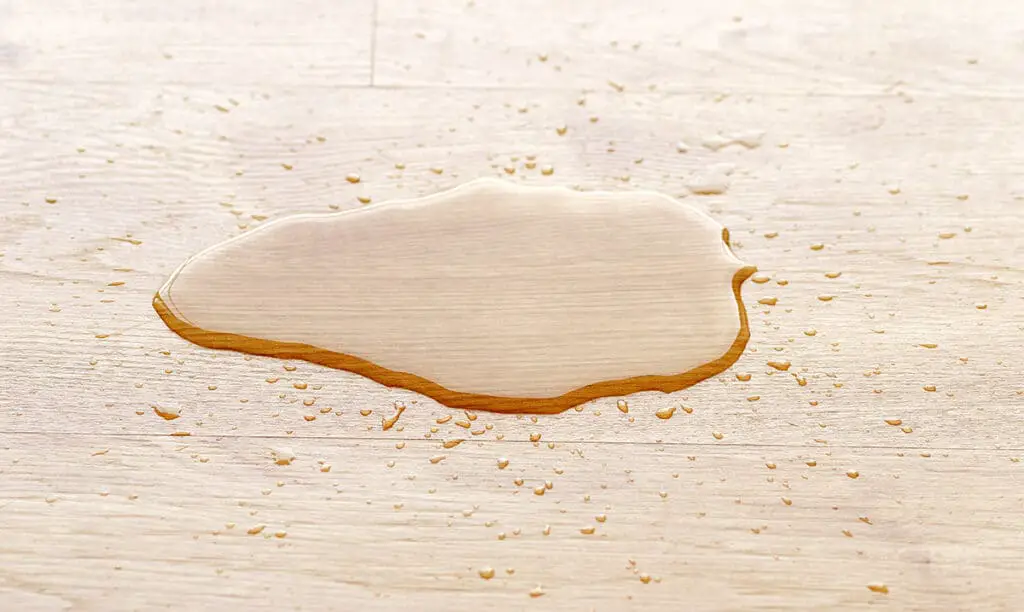
Can You Shrink Swollen Wood?
Dry the furniture
Water often swells wood. If you dry it out too quickly, it will shrink, crack, and warp. If drawers and doors are swollen, don’t force them open – you’ll do more damage. Instead, carefully remove the back of the furniture, and allow the air to circulate and dry steadily.
Swollen wood typically occurs when the material absorbs excess moisture, causing it to expand and warp. To reverse this process and shrink the wood back to its normal state, you must carefully remove the excess moisture and allow the wood to dry properly.
Here’s how you can achieve this:
Identify the Source of Moisture: Before attempting to shrink swollen wood, it’s essential to identify and address the source of moisture. Whether it’s a leak, high humidity, or a spill, stopping the influx of water is crucial to prevent further swelling.
Remove Standing Water: If there is any standing water on the wood surface, remove it immediately using towels, mops, or a wet/dry vacuum. This will prevent further absorption of water into the wood.
Improve Air Circulation: Enhance air circulation in the affected area by using fans, opening windows, and using dehumidifiers. This will help in the evaporation of trapped moisture from the wood.
Allow Sufficient Drying Time: Be patient and allow the wood to dry naturally. Depending on the extent of the swelling and the type of wood, the drying process may take several days to weeks. Avoid rushing this step, as hasty drying can lead to cracking or warping.
Monitor Moisture Levels: Use moisture meters to monitor the moisture content of the wood regularly. The goal is to bring the moisture level of the wood back to its normal range, which typically varies depending on the wood species.
Sand and Refinish: After the wood has dried completely, sand the surface to remove any uneven areas or rough spots caused by the swelling. Once the surface is smooth, apply a fresh coat of finish or sealant to protect the wood and restore its appearance.
Implement Preventive Measures: To prevent future swelling, take preventative measures like maintaining stable indoor humidity levels, using area rugs in high-moisture areas, and promptly addressing any water leaks or spills.
How do you flatten water damaged wood?
Use an Iron. Using an iron to cure water-damaged wood furniture is a straightforward approach to dealing with swollen wood furniture. Most people know how to use an iron safely, so it should be easy. Cover the swollen furniture with a wet rag and set your iron to a low-temperature setting.
Flattening water-damaged wood requires careful and systematic efforts to restore the material to its original flat and even state. Water damage can cause wood to warp, buckle, or cup, making the surface uneven and unappealing. Here’s a step-by-step guide on how to flatten water-damaged wood effectively:
Assess the Damage
Before attempting any repair, thoroughly assess the extent of the water damage on the wood. Identify areas that are warped, buckled, or cupped, and determine the severity of the damage.
Address the Source of Water
If the water damage is recent or ongoing, stop the source of water immediately to prevent further damage. Address any leaks or flooding issues to ensure the wood remains dry during the repair process.
Dry the Wood Thoroughly
Allow the water-damaged wood to dry completely. Use fans, dehumidifiers, and proper ventilation to expedite the drying process. Patience is essential, as rushing the drying process may lead to additional problems.
Apply Moisture and Weight
For minor warping or cupping, you can try the “moisture and weight” method. Dampen the concave side of the warped or cupped wood slightly, and then place a weight (like heavy books) on top. The moisture will help the wood fibers relax, and the weight will help flatten the wood gradually. Leave the wood under the weight for a few days, checking periodically to ensure it is not over-flattened.
Steam Treatment
For more severe warping or cupping, the steam treatment method can be effective. Apply steam to the concave side of the wood using a steam iron or a handheld steamer. The steam will help to soften the wood fibers, making it more pliable. Use clamps or weights to press the wood flat while it is still warm from the steam. Be cautious not to over-steam the wood, as excessive moisture can cause further damage.
Professional Help
If the water damage and warping are extensive or the wood is fragile, seeking the assistance of a professional woodworker or restoration expert is recommended. They have the expertise and specialized equipment to tackle severe water damage and restore the wood safely and effectively.
What do water damaged wood floors look like?
If you notice that your water-damaged floors are beginning to lose their color, you’re likely dealing with staining. You may see whitish circles, which indicate mild damage that could be addressed with repairs and refinishing. However, if you see dark black stains, the water has infiltrated the floorboards.
Water-damaged wood floors can exhibit various visible signs that indicate the presence of moisture-related issues. The appearance of the damage may vary depending on the severity of the water exposure and the type of wood used for the flooring. Here are some common signs of water-damaged wood floors:
One of the most apparent signs of water damage is swelling and warping of the wood planks. The wood may absorb excess moisture, causing it to expand, buckle, or cup. This can result in uneven and raised areas on the floor surface. Water-damaged wood floors may show discoloration or dark spots, especially in areas where water has pooled or penetrated the wood. The color change can be subtle or significant, depending on the duration and extent of water exposure.
As water-damaged wood dries out, it can contract, leading to gaps and cracks between the planks. These gaps may vary in size and can become more apparent as the wood loses moisture. When wood floors absorb excess water, they may become soft and spongy to the touch. This change in texture is a clear indicator of water damage and can affect the structural integrity of the flooring.
Is water damage on wood fixable?
Depending on the level of damage, wooden furniture damaged by water can frequently be repaired. If the wood is swollen, warped, or discolored, it is likely that the damage is superficial and can be sanded down and refinished. Worse damages, such as cracked or split wood, will require more extensive repairs.
Water damage on wood is often fixable, but the success of the repair depends on the extent of the damage and how promptly and appropriately it is addressed. Wood is a porous material that can absorb water, leading to various issues such as swelling, warping, discoloration, and even mold growth. Here’s a breakdown of the fixability of water damage on wood:
For minor water damage, such as small spills or brief exposure to moisture, the wood can often recover on its own as it dries out naturally. This may involve slight swelling or discoloration, but as the wood regains its normal moisture content, these issues typically resolve without the need for major interventions.
In cases of more significant water exposure, where the wood has swelled, warped, or developed stains, timely and appropriate action can often reverse the damage. Drying the wood thoroughly, using fans and dehumidifiers, can help restore the wood’s original shape and appearance.
If the water damage is extensive and has caused severe warping, buckling, or mold growth, professional assistance is essential. Skilled woodworkers or restoration experts can assess the damage and implement advanced techniques, such as steam treatments, to reshape the wood and minimize the impact of the water damage.
In some instances, when the wood is severely damaged, especially if it has started to rot, partial or full plank replacement might be necessary. Replacing damaged areas with new wood can restore the floor’s structural integrity and appearance.
When should I replace water damaged wood?
Look for wood pieces that have detached from the subfloor, causing bumps and an uneven surface. Buckling occurs when your wood floors are exposed to severe water damage and replacement is usually the only option.
Deciding when to replace water-damaged wood depends on the extent of the damage and the structural integrity of the wood. Here are some key considerations to help determine when replacement is necessary:
Extent of Damage: Assess the extent of the water damage on the wood. If the damage is limited to minor surface discoloration or slight swelling, repairs may be sufficient. However, if the wood has significant warping, cracking, or rotting, replacement might be the best option.
Structural Integrity: Consider the structural integrity of the water-damaged wood. If the damage has compromised the wood’s strength and stability, it is safer to replace it rather than risking potential hazards like weakened floors or support structures.
Mold Growth: If water damage has led to mold growth within the wood, replacement is usually necessary. Mold can spread rapidly and pose health risks to occupants, making it crucial to remove and replace affected wood promptly.
Safety Concerns: If the water-damaged wood poses safety risks, such as tripping hazards from severe warping or buckling, immediate replacement is advisable.
Unsuccessful Repairs: If previous repair attempts have not adequately addressed the water damage and the issues persist or worsen, replacement may be the most effective solution.
Repeated Water Damage: If the wood has experienced multiple instances of water damage, it may become more susceptible to future damage, making replacement a more viable long-term option.
Cost vs. Replacement: Evaluate the cost of repairs versus replacement. In some cases, especially with extensive damage, the cost of repairs can be prohibitive, and it might be more cost-effective to replace the wood.
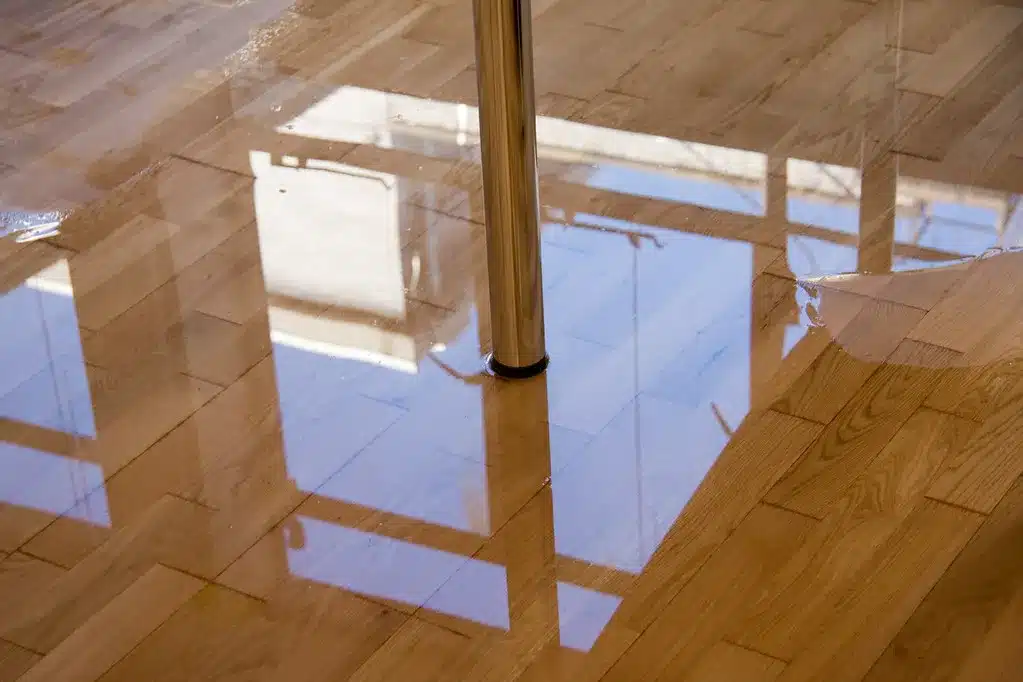
Conclusion
Fixing a water-damaged swollen wood floor requires a comprehensive and strategic approach to address both the cause of the water damage and the resulting swelling. By following the steps outlined in this guide, homeowners can effectively restore their wood floors and preserve their beauty and structural integrity.
The first crucial step is to identify and eliminate the source of water or moisture causing the damage. Once the water source is under control, it is essential to dry the affected area thoroughly using fans, dehumidifiers, and proper ventilation. Rushing the drying fix swollen process can lead to further damage, so patience is key.
After the wood floor has dried completely, assessing the extent of the damage is necessary to determine the appropriate course of action. Minor swelling may improve over time with improved ventilation and dehumidification, while more severe cases may require plank replacement or sanding and refinishing.
Individual plank replacement can effectively address significant gaps or damaged planks, while sanding and refinishing can restore an uneven surface to its original smoothness. It is vital to match the finish carefully to blend seamlessly with the existing floor.



